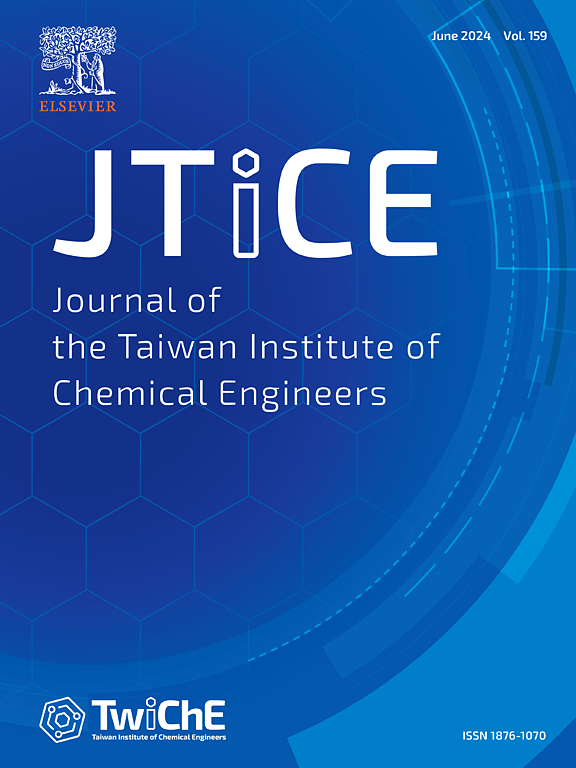Superior adsorption of tetracycline onto magnetic rectorite/algal sludge/lake sediment composite
IF 5.5
3区 工程技术
Q1 ENGINEERING, CHEMICAL
Journal of the Taiwan Institute of Chemical Engineers
Pub Date : 2025-04-19
DOI:10.1016/j.jtice.2025.106141
引用次数: 0
Abstract
Background
The development of effective technologies for removing tetracycline (TC) from aquatic environments is crucial. In this study, the superior adsorption and separation properties of Fe-RASs for TC were investigated, and the removal mechanism of TC was proposed.
Methods
Fe-RASs were synthesized by metal modification methods (impregnation and co-precipitation) and iron valences (Fe2+, Fe3+, and Fe6+). The structure and physicochemical properties of Fe-RASs were characterized by SEM, XRD, FTIR, BET, XPS, and VSM. The influence of pH and temperature on the adsorption characteristics, as well as the adsorption isotherm and kinetics was investigated.
Significant findings
Fe6+-RAS, prepared by pyrolysis following impregnation with K2FeO4, shows superior TC adsorption capacity (Qm: 191.32 mg/g), presenting an efficient and eco-friendly adsorbent. The adsorption mechanism mainly includes pore filling, surface complexation, π-π interaction, hydrogen bonding and electrostatic interaction. Fe-RASs are easy to recover and reduce secondary contamination. In summary, this study realizes the conversion of solid waste into value-added products for environmental remediation, and is expected to offer valuable references on the synthesis method and appropriate iron sources for the pyrolysis of magnetic materials.

磁性累托石/藻泥/湖泊沉积物复合材料对四环素的优异吸附
背景开发有效去除水生环境中四环素(TC)的技术至关重要。方法采用金属改性(浸渍法和共沉淀法)和铁价(Fe2+、Fe3+和Fe6+)合成了Fe-RASs。通过扫描电镜、X射线衍射、傅立叶变换红外光谱、BET、XPS和VSM对Fe-RASs的结构和理化性质进行了表征。重要发现用 K2FeO4 浸渍后热解制备的 Fe6+-RAS 具有优异的 TC 吸附能力(Qm:191.32 mg/g),是一种高效、环保的吸附剂。吸附机理主要包括孔隙填充、表面络合、π-π相互作用、氢键和静电作用。Fe-RAS 易于回收,可减少二次污染。总之,本研究实现了固体废弃物向环境修复增值产品的转化,有望为磁性材料热解的合成方法和合适的铁源提供有价值的参考。
本文章由计算机程序翻译,如有差异,请以英文原文为准。
求助全文
约1分钟内获得全文
求助全文
来源期刊
CiteScore
9.10
自引率
14.00%
发文量
362
审稿时长
35 days
期刊介绍:
Journal of the Taiwan Institute of Chemical Engineers (formerly known as Journal of the Chinese Institute of Chemical Engineers) publishes original works, from fundamental principles to practical applications, in the broad field of chemical engineering with special focus on three aspects: Chemical and Biomolecular Science and Technology, Energy and Environmental Science and Technology, and Materials Science and Technology. Authors should choose for their manuscript an appropriate aspect section and a few related classifications when submitting to the journal online.

 求助内容:
求助内容: 应助结果提醒方式:
应助结果提醒方式:


